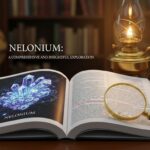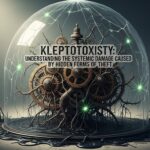In recent years, asbestlint has become a topic of growing interest among builders, homeowners, environmental analysts, and safety professionals. While the name sounds similar to asbestos, the two are not the same—though they share a historical connection. Asbestlint refers to a fibrous byproduct collected during the processing of older insulation and fire-resistant materials. Because many structures built before the late 1990s contained materials with similar composite fibers, asbestlint often appears during renovation, demolition, and industrial cleaning processes.
Despite its increasing relevance, there is still confusion about what it is, why it appears, and what you should do if you encounter it. This comprehensive guide breaks everything down in an accessible, SEO-friendly, and up-to-date way for 2025.
What Exactly Is Asbestlint?
At its core, asbestlint is a fine, lint-like residue made of mineral-based fibers. It forms when old insulation or fireproofing materials deteriorate or break apart during removal or handling. Although the name suggests a direct link to asbestos, asbestlint is better described as a secondary byproduct associated with aging building substrates.
Unlike asbestos fibers—which are classified as carcinogenic—modern testing shows that asbestlint can vary greatly in composition. Some samples contain mineral dust, cellulose fibers, or synthetic fibers, making its characteristics change depending on the source material. Because of this variability, proper testing and handling guidelines are essential.
Why Asbestlint Appears in Older Buildings
Many structures built before 2000 used composite insulation materials for fire resistance, thermal protection, and acoustic performance. Over time, physical stress, moisture exposure, and structural aging cause these materials to degrade.
Asbestlint typically appears during:
-
Renovation work involving ceilings or attics
-
Removal of old pipe insulation
-
Demolition of aging commercial buildings
-
HVAC cleaning or duct maintenance
-
Storage cleanup in industrial facilities
Although most modern building codes no longer use materials that generate asbestlint, older structures may still contain embedded fibers that release lint-like particles when disturbed.
Common Uses and Misunderstandings About Asbestlint
While asbes-tlint is not intentionally manufactured today, some older industries unintentionally created it during insulation production. A lingering misconception is that it was once used as a consumer product. In reality, asbestlint was never marketed—it appeared as waste from insulation trimming or installation.
Common misconceptions:
-
“Asbestlint is the same as asbestos.”
This is incorrect. Asbes-tlint may or may not contain asbestos fibers. Testing is required for confirmation. -
“Asbes-tlint is harmless.”
Not always true. Its safety depends on particle size, composition, and airborne concentration. -
“Asbes-tlint only forms in industrial buildings.”
Some older residential homes with early insulation systems can also contain asbes-tlint buildup.
How Asbestlint Impacts Indoor Air Quality
When undisturbed, most asbes-tlint remains settled within insulation layers. The risk arises when it becomes airborne, especially during construction activities. Dust-like particles can circulate in enclosed spaces, settling on surfaces or entering ventilation systems.
Potential impacts include:
-
Increased airborne particulates
-
Respiratory irritation for sensitive individuals
-
Potential contamination of HVAC filters
-
Reduced indoor air quality during renovations
Even if the material does not contain harmful fibers, large amounts of airborne particles can still be uncomfortable for occupants.
Is Asbestlint Hazardous? What Modern Tests Reveal
One of the biggest questions people ask is whether asbestlint is dangerous. Unfortunately, the answer depends on what the asbestlint sample contains. Because it is a byproduct rather than a standardized material, composition varies between buildings.
Modern lab tests analyze for:
-
Mineral fiber content
-
Synthetic fiber fragments
-
Dust and particulate concentration
-
Potential asbestos traces
-
Chemical additives from older insulation
If asbestlint contains asbestos fibers, then it falls under strict abatement regulations. If not, it may still require controlled cleaning, depending on how airborne it becomes.
How Asbestlint Is Identified During Renovation
Professionals use a multi-step process to identify and confirm the presence of asbestlint:
-
Visual assessment – Checking for lint-like deposits around insulation or ducts.
-
Sample collection – Using sealed containers to avoid airborne release.
-
Microscopic analysis – Determining fiber type and composition.
-
Air quality testing – Measuring airborne particulate levels during work.
This structured approach prevents unnecessary exposure and determines the safest removal method.
Safe Handling and Removal of Asbestlint
If asbes-tlint is discovered, safe handling is crucial. Even if the material contains no harmful fibers, inhaling large quantities of particulate matter can be uncomfortable.
General safety practices include:
-
Wearing protective masks or respirators
-
Sealing off the affected work area
-
Using HEPA-grade vacuums
-
Avoiding dry sweeping
-
Ensuring proper ventilation
-
Hiring certified professionals for suspected fiber-based materials
In cases where asbes-tlint may contain regulated fibers, licensed abatement specialists must handle removal following national safety compliance rules.
Modern Alternatives That Replace Asbestlint-Producing Materials
Today’s construction industry has moved beyond the materials that historically produced asbes-tlint. Modern insulation and fireproofing solutions offer cleaner, safer performance with minimal dust production.
Common alternatives include:
-
Mineral wool
-
High-density fiberglass
-
Ceramic fiber insulation
-
Polyurethane foam systems
-
Eco-friendly cellulose blends
These modern materials are engineered to resist breakdown, reducing the likelihood of lint-like byproducts during routine building use.
How to Prevent Asbestlint Accumulation in Older Buildings
Preventing asbestlint buildup is possible with consistent maintenance and awareness. Older homes and facilities benefit from:
-
Regular HVAC inspections
-
Checking attic insulation yearly
-
Moisture control to prevent material decomposition
-
Professional assessments before renovations
-
Upgrading old insulation when possible
Taking these steps helps reduce airborne particles and makes living environments safer for occupants.
The Future of Asbestlint Management
As construction technology evolves, fewer buildings rely on materials that generate asbestlint. Environmental testing companies now use advanced imaging systems to identify particulate composition more accurately than ever before. In 2025, building management trends lean toward proactive detection, routine maintenance, and replacing outdated materials.
In the years ahead, asbestlint will likely remain relevant only in older structures. However, properly managing it today ensures safer environments while preserving building longevity.
Conclusion
Asbestlint is a misunderstood but important topic for anyone dealing with older buildings or planning renovation projects. Although not inherently hazardous, its variable composition means it must be treated with caution. By understanding what asbestlint is, where it comes from, how it affects indoor air quality, and how it should be handled, property owners and professionals can make informed decisions that protect both safety and structural integrity.
If you suspect the presence of asbestlint in your space, testing, proper containment, and safe removal practices remain your best course of action.






